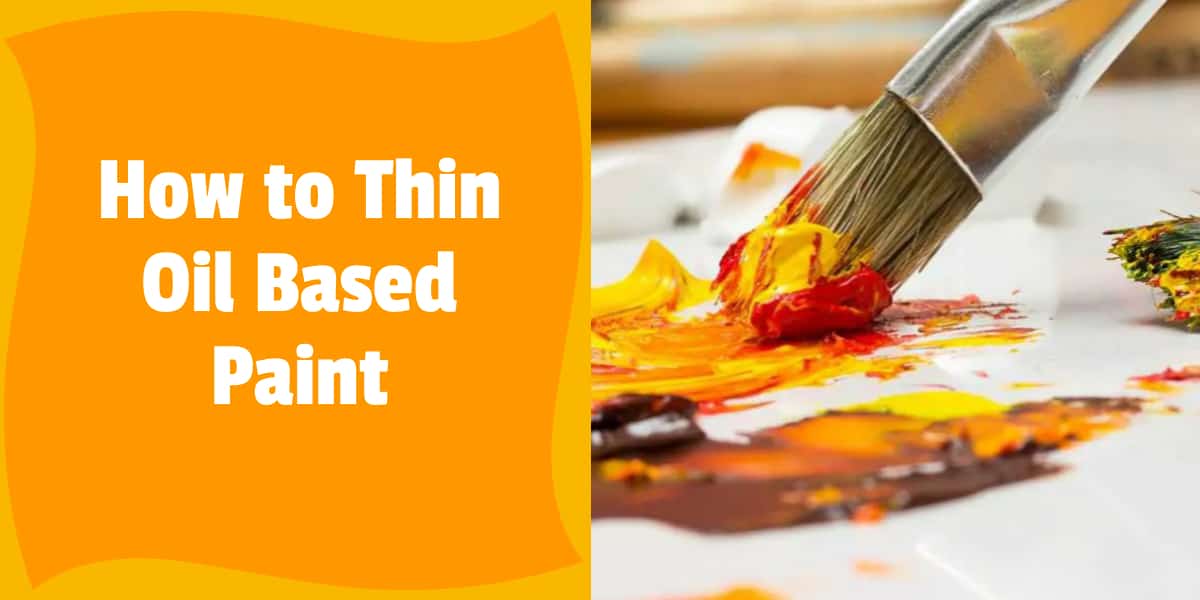
Affiliate links may be present in this article. We might receive a commission if you click and buy, at no extra cost to you. For additional information, please visit our disclosure policy.
Artists have several ways of thinning lubricant dye. The best thinning mode relied heavily on the thinning process, the thinness of the paint, the dilution method, and the wanted results. Lubricant dyes are diluted to match present needs. Where possible, have a look at what you will paint before diluting your dyes.
What are some of the best options when thinning lubricant paint? You need to learn the best options to embrace them. Choose the right choice where possible. Thinning lubricants must be chosen from the best and consideration of other factors must always be done.
Diluters such as inorganic spirits lead reduce stickiness and a regulated drying time. Natural oils such as linseed oils attain advanced viscidness, less drying time, and sleeker outcomes. Get the best option on all occasions. Quality outcome and the best product is guaranteed through this.
Alternative options can be applied too. Below is detailed information on the varied ways of diluting dye lubricants. Read on here and discover varied ways to dilute dyes. Artists will benefit greatly once they read through this article.
Read also: Best Paint For Tiles
Contents
Thin lubricant Dye with Diluters
Common ways of thinning lubricant paints are by the use of diluters such as inorganic spirits or turpentine. Diluters are consistent in thinning lubricant paints fast, tackily, and comprehensively making them the best option. Thinning depends on what you want to paint, and texture and thus you can be a soup-like or butter.
There are diverse types of diluters, choose the best depending on the dye type as well as where to apply it. when choosing diluters, consider whether they have any side effects. Where possible, engage expert painters for direction on how to handle lubricant dyes and diluters. Such a move will be very helpful to you.
Some diluters pose health risks when inhaled. Once you know them, you can put the necessary mitigation measures. Make efforts and follow safety guidelines given by health experts when handling diluters. They are simple and very helpful to you.
Compared with natural oils, dilution diluters dry faster. One can paint their products and in 1 or 2 days they dry off. These diluters are ideas where there are no heavy workloads. You can meet the demand for painted products within the set timelines once you embrace their use.
Some of the natural oils that can be used in lubricant dilution are linseed and safflower oil. One can choose to use either of the two. Oils make paintings dull thus making them less preferred lubricant thinners. Diluters are affordable compared with other lubricant thinners. Most painters prefer using diluters paint diluters that give quality results.
Painters must avoid violating the fat-over-lean rule. Fat over lean rule stipulates that subsequent dye layers must have more lubricant content than the previous layers for them to combat sinking. Sinking happens when dull spots appear on your painting after it dries. Thus when using a diluter, you are not worried about violating this rule.
Quality paints are assured once sinking is avoided. Where sinking occurs erroneously, repainting is recommended. Better paint products are the end goal and this justifies the means. Care is always exercised to ensure that sinking is avoided at all costs.
It is clear that on the first layers, you should dilute your dye with mineral spirits only. Mineral spirits are the best diluters since they aid overcome sinking. Mineral spirits offer the best diluting solutions hence the reason why they are preferred over other diluting substances.
Each following layer must have less diluter than the previous one ensuring that it has more oil. This is a general standard that all painters should know. It helps overcome sinking as well as unbalanced paints. This is a general knowledge idea that is known to all painters.
Where oil paint used, subsequent layers of dye should not be thinned with Diluters as this can cause increased sinking. Ensure that you follow all the instructions as given by paint manufacturers for quality paints.
Use the correct diluting substance all through and get the right end product. Preserve oil-based thinners for glazing purposes only. Oil-based thinners offer shiny results and are the best where you want to have attractive paints.
The main disadvantage of using Diluters as Oil dye thinners are diluters emit gasses that can be harmful breathes in over extended exposure. Those with increased sensitivity once they contact diluters can abandon it. Fumes emitted by these diluters are harmful and can have adverse side effects on your general well-being.
There are options for thinning lubricant paints. Embrace the right option considering your general health as well as the environment. Your options of choice must be well informed. Read on here and find out.
Diluters such as Gamsol or Turpenoid have been endorsed diluters for artists. These diluters have no additives and have less smell compared with inorganic spirits. Such diluters are the best option that you should opt for. They are safer and offer the best results. Those suffering from allergies are also encouraged to embrace these diluters.
Turpentine is another option you can go for. Turpentine is among the oldest diluters known. It has been in use for many years. Turpentine has been around longer than inorganic spirits and it is derived from petroleum distillates.
Alongside being expensive, turpentine emits more gasses making most painters shun it. turpentine is commonly used in instances where there are no other diluters. It is used as a last-result diluter.
Mixing Diluters with Lubricant Paints
To shrill your oil dye with a diluter, discharge some diluter into a slight jar. Ensure that whatever vessel you use must have a close-fitting lid for containing the emission of gases and evaporation. Spills are avoided once your jar is fitted with a lid.
This helps your paint mix well with the diluter being used. Avoid mixing dilutes and lubricant paints in the open. Conveniently, choose your mixing place and ensure that you have all the apparatus needed.
Dip your whisk into the diluter. Immerse just the tip of your whisk into the diluter. If you want to dye soupier consistency, immerse most of your whisk into the diluter. Whisk your palette. Repeat this process until you achieve the required results. Where there are challenges in attaining the set goal, consider repeating the whole process or changing the whisk.
Read also: How To Dispose Of White Spirit
Thinning lubricant Paints with Oils
There are vital things that you must know about thinning your lubricant dye. The use of oils as thinners offer glossier and viscid results compared with diluters. Oils are known to offer great and satisfying finishing. They are the right thinners that one should always think of.
Avoid sinking in by thinning in the first and the second layers with inorganic spirit diluters and then the subsequent ones with oils. Below are some of the lubricant diluters and their appearances. Read on and discover more.
Linseed Oil
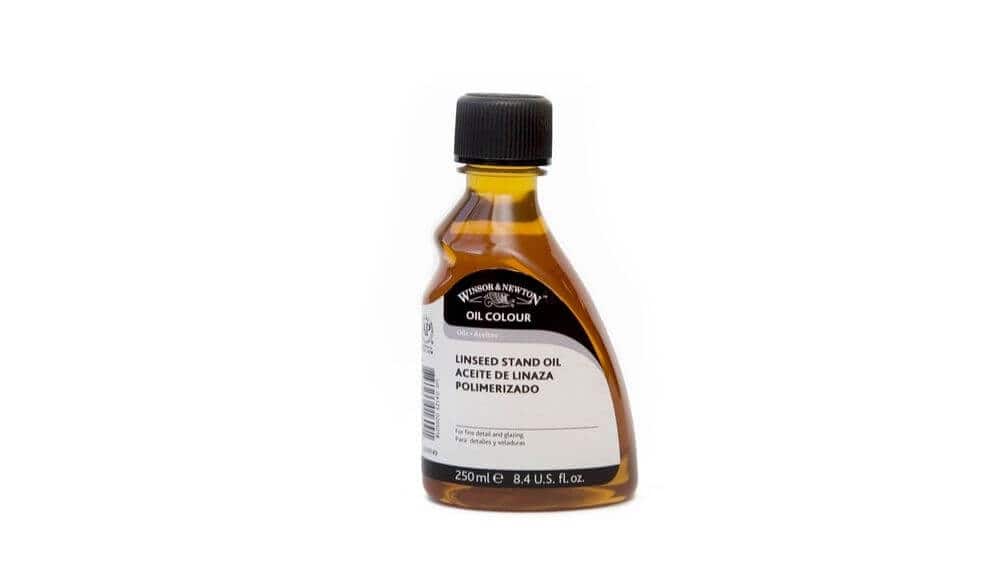
Most commonly used lubricant for lubricant painting. It is the most stable lubricant drying after around 5 days. linseed can yellow with time thus making it less preferred. However, some prefer linseed due to other benefits. Try it out today and find out if it is among the thinning lubricants you can go for.
Walnut Oil
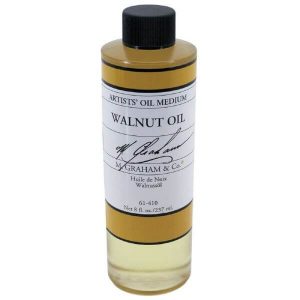
Yellowing is resistant, cracking, and dries slower than linseed oil. Walnut lubricant can offer intense colours. Where you want concentrated colours, you advised me to choose walnut oil. Retain the desired colours by opting for walnut oil whenever there is a need.
Safflower Oil
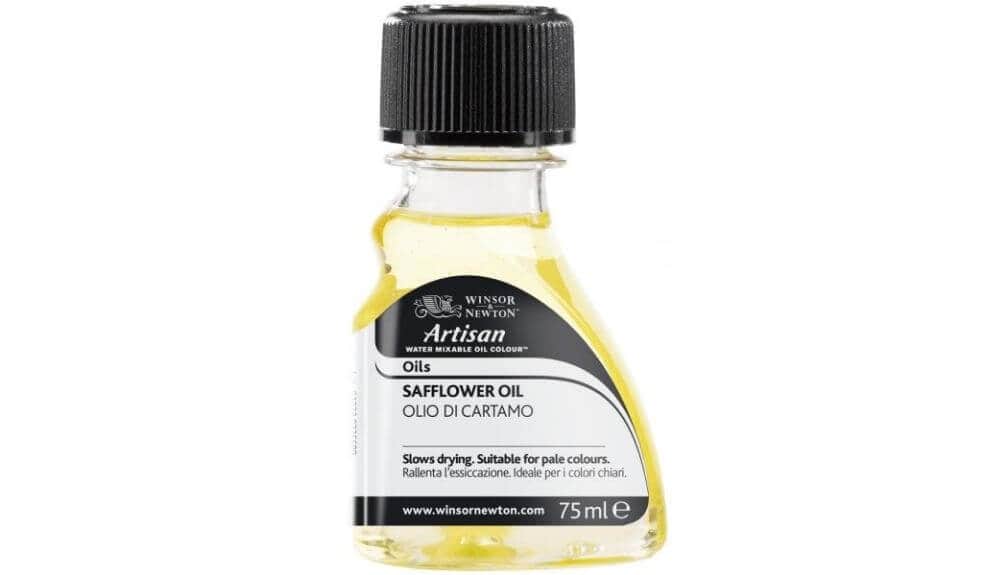
Dries more evenly and doesn’t yellow and can hold for a long time. Safflower oil is not so common. This is another great product in painting that one should be willing to embrace for better results.
Poppy Oil
Dries slower and should be avoided in initial layers. It is not among the lubricants that you should love to use. At times it can be very disappointing when you use it without knowing that it dries slowly.
Stand Oil
This is heated linseed oil. It dries faster and has better colour retention ability. Just like the name, stand oil takes quality time to dry. Once dry, it is among the best textures that one can enjoy.
How to Blend Lubricants with Lubricant Paint
Mixing oils with Oil dye is a related process to mixing diluters with lubricant dye. Pour some into a minor jar. With oils, the jar doesn’t need a lid as fumes and evaporation will not be an issue (unless you just don’t like the smell). Insert your brush into the lubricant and then fusion it with your dye.
Minor jars are best so you can substitute polluted lubricant with clean lubricant more often and with less waste. Go for the best blend lubricants. Engage an expert painter and get all the tips you need when using blend lubricants with lubricant paint.
Other means that can be used in thinning oils exist. Most of these are a combination of oil-based substances. Some of them include:
Galkyd
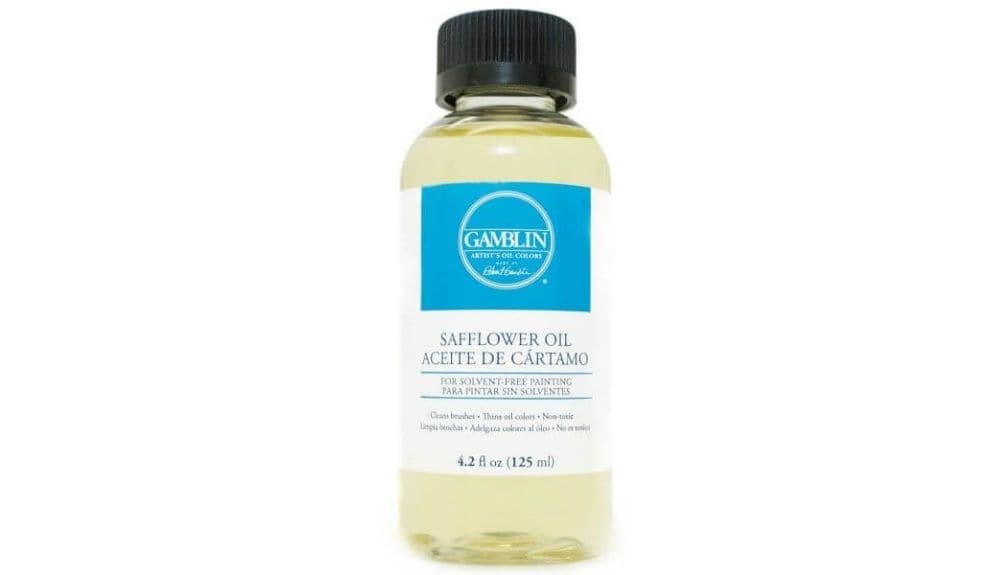
Made by Gamlin from petroleum distillates and has extraordinary tackiness. Dries faster and offers a glossy finish. Versions of Galkyd include; Galkyd Lite and Galkyd Slow dry
Liquin
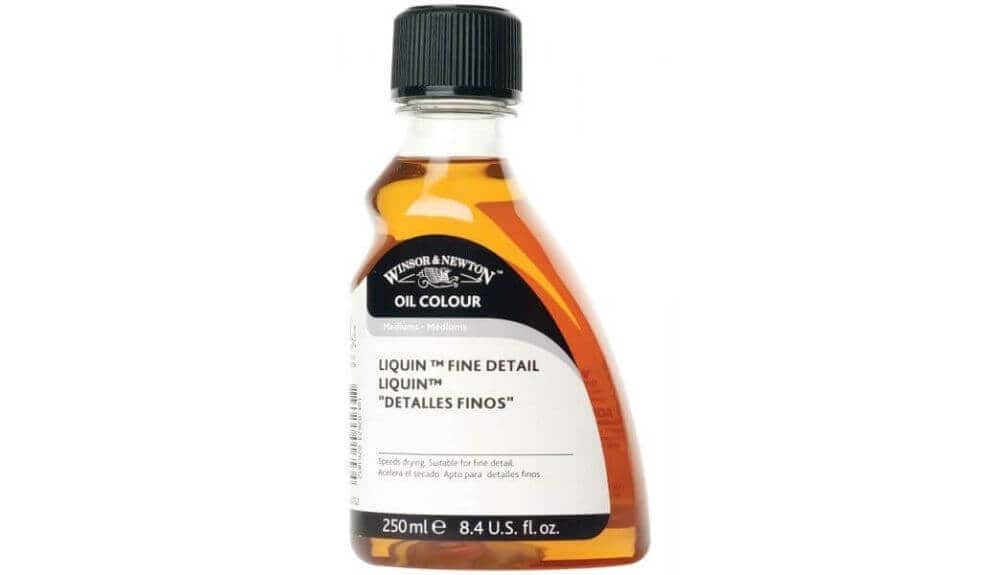
Derived from petroleum distillates and was made by Winsor & Newton as a moderate substitute for Maroger medium.
How to Blend Diluters with Lubricant Paint
To use Galkyd or Liquin, decant a minimal quantity onto your palette or into a minor container, insert your whisk into it, then fusion it into your dye. You can fusion a minimal quantity for impasto techniques or a large size for glazing. Your container must not be so big.
Ensure that it is minimal and can be accessed with ease. Avoid too complex containers as they are always time-consuming. Learn quality options to go for when blending dilutes with lubricant paint today.
Thin Oil Dye with Gels
Having a very extraordinary viscidness, creams are excessive if you want to dye a more impasto skill (thick dye submission). Though they will not shrill your dye in the same notch as its more fluid counterparts, ointments will still allow you to blow out the dye across the canvas and give it a more gloss when it dries.
Using oil dye gels is common and many people prefer it. choose the right gel.
Maroger Medium
Consisting of lead broiled with linseed oil, Maroger was developed by Jacque Maroger. Jacques discovered this medium that was used by the Old Masters. This medium is incredibly versatile. The best option when you want more impasto paints.
Neo-megilp
This resembles Maroger Medium but with no lead. Less toxic and dries less glossy.
Other Gels
Other available creams are; Gamlin’s Diluter-Free Cream as well as Rublev’s Epoxide Loosen Gel, walnut oil Gel, and Oleoresgel.
Combining Diluters and Oils
Once combined, oils and Diluters offer diverse results. Painters must identify what they want as their end product and appearance before making any combination. Diluters are known to offer quality paints. Embrace them and attain the right quality whenever you need them.
Note that compatible products by checking the manufacturers’ recommendations.
FAQS
Can you use water and thin lubricant paint?
No, you cannot. Unlike water-based paints such as watercolours that can dilute using water, you must thin lubricant paints with the thinners mentioned above. You know, lubricant and water don’t mix. Most lubricants are oily thus making them not to mix with water.
Can you use vinegar for paint thinner?
Yes, you can. Just wipe away the lubricant painting layer that seems like you made a mistake or you are not fond of using rubbing alcohol, this diluter is potent!
Can you use lubricant spray lubricant in a spray gun?
Yes, you can spray oil paints and primers with spray guns.
How to thin oil-based paint?
Oil-based paints are thinned with inorganic spirits or turpentine by mixing the dye with the white spirits.
What dye do you use in a spray gun?
Depending on the type of spray gun, you can use all types of dye in a spray gun.



